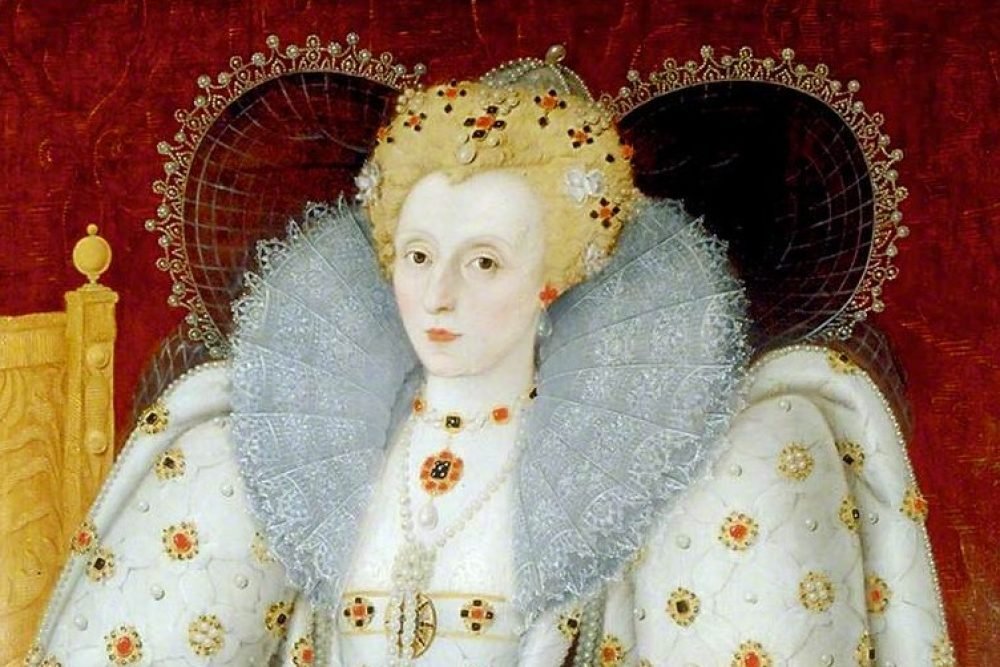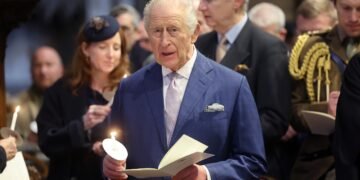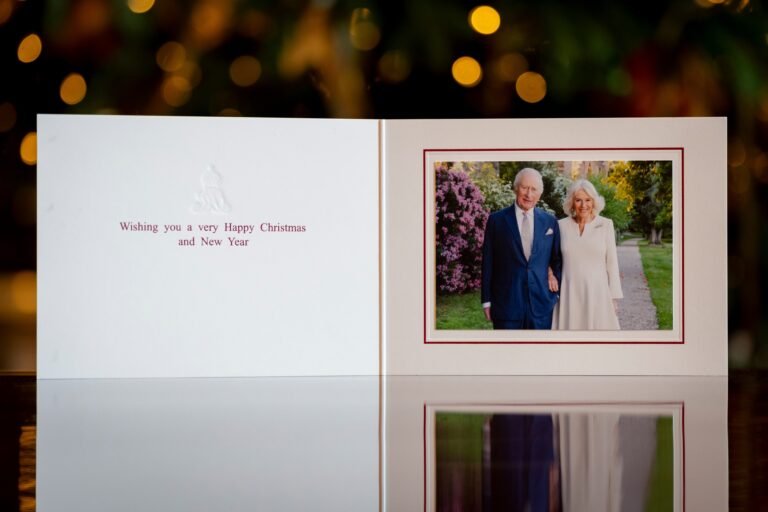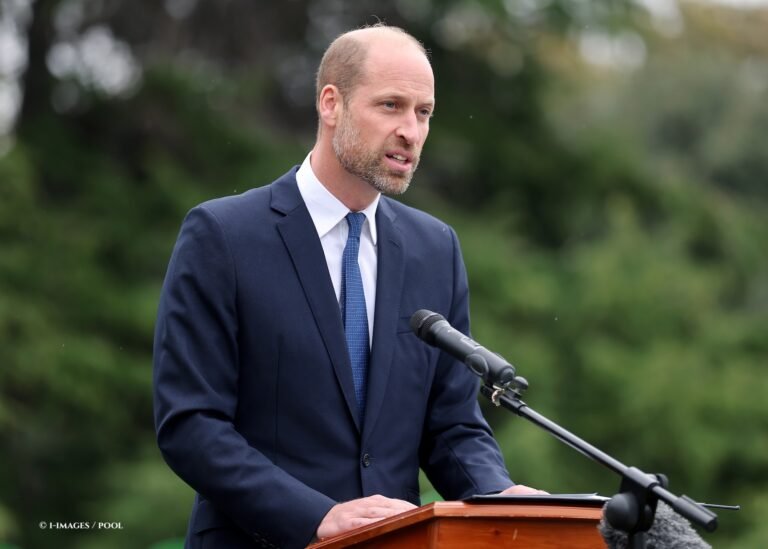Mary, Queen of Scots and Elizabeth I’s letters to each other were their only sources of communication. They remain to this day historians’ most insightful sources on the 25-year rivalry between the two Queens, as they show how Mary and Elizabeth’s relationship changed over time. They reveal fascinating insights into the two cousins and rivals’ personalities, and above all else, their fundamentally different approaches to their respective positions as two Queens Regnant living on the same isle with a claim to the same throne.
The manner in which they wrote to each other, especially their choice of words and language, reflects the profoundly different and evolving approaches these two women employed in communicating to each other over time and, more broadly, in seeking to control their circumstances. Above all, their letters serve as invaluable evidence of the shift in the Queens’ attitudes to each other from youthful rivalry, to a brief period of sisterly solidarity, to profoundly hostile confrontation toward the end of their correspondence.
Without the evidence these letters provide, historians would have only the testimony of those who knew the royal women – and not the crucial words of the Queens themselves – to piece together a contextual framework for Mary and Elizabeth’s evolving rivalry.
Whereas Mary (1542-1587), the more passionate of the two women, is direct, emotional, and often uses either pleading or accusatory language depending on the situation; her cousin Elizabeth (1533-1603) is more circumspect, usually dispassionate in tone, and often gives admonishing words of caution or paternalistic, almost sisterly advice.
Astonishingly, by the end of their correspondence, Elizabeth would directly and explicitly accuse Mary of plotting against her life, while Mary would hauntingly remind Elizabeth that she would face a dreadful eternal reckoning should she choose, as Elizabeth ultimately did, to sign the death warrant and execute her cousin and fellow Monarch.
These letters reveal no clear winner, but instead, we are left to wonder at the complex personalities of these two rival Sovereigns. What is certain is that, without these letters, we would have only the conjecture and prejudiced opinions of the two Queens’ senior advisers and ministers to attempt to piece together a fuller picture: the letters are indispensable. They confirm and solidify the oft-repeated historical record that Mary was first and foremost a woman and only then a Monarch, morphing during her English captivity from a desperate femme fatale into a would-be-martyr. Elizabeth, on the other hand, emerges as a Queen who only then allowed herself to be a woman, always subordinating her personal wishes to her political instincts.
How it all began
Mary and Elizabeth’s rivalry begins over a confrontation between the two in 1558, rooted in the two different destinies awaiting them, when Elizabeth became Queen and Mary married her first husband, Dauphin Francois of France. The conflict was one of status and title, centring on Mary’s naïve acceptance of her father-in-law’s decision to claim the thrones of England and Ireland in her name – a decision that both outraged and disconcerted Elizabeth.
Upon learning of Mary I’s death, Henri II of France immediately proclaimed his son and daughter-in-law King and Queen of England and Ireland, since, in the eyes of Catholic Europe, Elizabeth, the daughter of Henry VIII by Anne Boleyn, was illegitimate, and Mary, Queen of Scots was now the rightful Queen of England.
The young Mary, only 15 at her marriage, seems not to have understood how deeply she offended her older cousin Elizabeth by allowing her Henri II and her de Guise uncles ‘to claim the title Queen of England and Ireland for the house of Valois, and quarter Mary’s arms with those of France, Scotland and England’. Although this scheme was not initiated by Mary, ‘her acceptance and overriding pursuit of it altered her destiny forever’, and made Elizabeth view her as a serious rival for the English throne.
Elizabeth first refers to Mary politely in the first peace treaty she signed with France and Scotland (then governed by Mary’s formidable mother, the Scottish Queen Mother and Regent, Marie de Guise). In asserting that Mary was not Queen of England, Elizabeth deliberately chose diplomatic language in defending her own claim to be England’s rightful Monarch. She tactfully accepted ‘that the title to this kingdom injuriously pretended in so many ways by the Queen of Scotland has not proceeded otherwise than from the ambitious desire of the principal members of the House of Guise’, i.e. Mary’s uncles.
Mary assumed the royal arms of England in November 1558. Thus, as early as 1558, we have evidence that Mary claimed to be the rightful Queen of England. Elizabeth, in an almost chiding tone, went on to patronise the young Mary and her husband Francois for their youthful error in claiming what she asserted was her rightful title: “The King, who by reason of his youth…The Queen of Scots, who is likewise very young…have [not] of themselves imagined and deliberated an enterprise so unjust, unreasonable, and perilous” as to brazenly quarter their arms with England’s.
While her claims unnerved Elizabeth, at this stage the rivalry between the two Queens seems more indicative of a youthful concern for status and image which, while not trifling, was a far cry from the verbal attacks the two would ultimately launch at each other before Mary’s execution.

In December 1560, aged only sixteen, Mary’s husband Francois died, leaving her a widow at 17, and the stage set for Mary and Elizabeth’s first serious confrontation. Within several months, after experiencing what seems to have been a profound depression and nervous collapse, the widowed Mary made up her mind to return to her native Scotland. This prospect alarmed Elizabeth, who was horrified of the prospect of her Catholic cousin and rival suddenly arriving on her doorstep. Citing Mary’s refusal to ratify the Treaty of Edinburgh, in which Scotland’s Protestant leaders acknowledged Elizabeth as rightful Queen of England, Elizabeth refused her cousin a warrant of safe passage through English waters on her return from France to Scotland.
Mary responded with her first known letter in reference to her English cousin. Exhibiting what was to become a lifelong flair for self-dramatisation, the now-Dowager Queen of France wrote to the English ambassador: “I am determined to adventure the matter, whatsoever come of it; I trust the wind will be so favourable that I shall not need to come on the coast of England; for if I do, then… The Queen your mistress shall have me in her hands to do her will of me; and if she be so hard-hearted as to desire my end, she may then do her pleasure and make sacrifice of me.”
By the early 1560s we see a more positive shift in the relationship, with Mary remaining in Scotland, having seemingly forgotten about Elizabeth’s refusal to grant her safe passage through England. Both were now writing in amenable, even affectionate, terms to each other. Mary seems clearly to be the more emotional partner in their letters, once kissing a letter Elizabeth had written for her, saying to the English ambassador “I will kiss it also…for her sake it commeth from.”
The Darnley and Bothwell problem
In summer 1565, Mary married her second husband, the nearest heir to both the Scottish and – after Mary – English thrones, Henry Stuart, Lord Darnley. Darnley was both of Elizabeth and Mary’s cousin. Elizabeth had deliberately sent Darnley north in the hopes of seducing Mary. Within months, it became clear to all that Mary had rushed into a disastrous marriage; Darnley emerged as a drunk, a boor, and a womaniser. While Mary achieved perhaps her most important life’s goal, giving birth to a son and heir, James, in June 1566, her misery in her marriage led to a whirlwind of drama culminating in the February 1567 murder of her husband.
The Scottish Queen had not hid her misery in her marriage from Darnley’s enemies, even going so far as to say to some of her lords that ‘unless she were quit of [Darnley] by one means or another, she could never have a good day for the rest of her life’.
On 24th February 1567, Elizabeth wrote the following impassioned letter to Mary, using what has been described as ‘great frankness without any of the usual circumlocutions common in her diplomatic correspondence’. It marks the first of four major turning points in relations. The letter is remarkable in that the usually-prescribed Elizabeth pointedly avoids the usual formalities, urging Mary in extremely direct language to act immediately to preserve her reputation and distance herself from her husband’s alleged killer, James Hepburn, Earl of Bothwell:
Madame: My ears have been so deafened and my understanding so grieved and my heart so affrighted to hear the dreadful news of the abominable murder of your mad husband and my killed cousin that I scarcely have the wits to write about it… I cannot dissemble that I am more sorrowful for you than for him… I will not at all dissemble what most people are talking about: which is that you will look through your fingers at [ignore] the revenging of this deed… However I exhort you, I counsel you, and I beseech you to take this thing so much to heart that you will not fear to touch even him [Bothwell] whom you have nearest to you if the thing [the murder] touches him, and that no persuasion will prevent you from making an example [of justice] out of this to the world: that you are both a noble princess and a loyal wife.
As Elizabeth’s words here illustrate – ‘you will look through your fingers at the revenging of this deed’ – gossip was already rife that Mary would not punish her estranged husband’s murderer. Elizabeth speaks plainly to Mary as her equal, as a fellow Queen, and also, on an emotional and direct level, as a fellow woman. Her unusually direct and emotional words, full of solidarity and sympathy for Mary, nevertheless contain heartfelt and practical advice to defend her honour and distance herself from Bothwell, the man at the centre of Darnley’s murder.
It is in this letter that Elizabeth revealingly observes that ‘I am not ignorant that you have no wiser counselors than myself’, casting herself as Mary’s chief adviser and defender against her enemies’ schemes. Despite receiving Elizabeth’s letter, Mary, under Bothwell’s control, took the worst route possible, ensuring her own downfall and the premature end of her reign.
Almost as soon as Darnley was dead, Bothwell began to establish a strong emotional and psychological hold over Mary, to the point that Mary arranged a show trial in April 1567, which acquitted Bothwell of all involvement in Darnley’s murder. Prior to hearing about the outcome of the show trial, Elizabeth wrote again to Mary, writing in uncharacteristically emotional, motherly terms: “Madam, I treat you as my daughter, and assure you that if I had one, I could wish for her nothing better than I desire for you… the one for whom one wishes the greatest good that may be possible in this world.” There is no evidence that Mary, by then completely infatuated with Bothwell, responded to this warm letter of sympathy from Elizabeth.
Disturbed by Mary’s silence, soon after, Elizabeth wrote touchingly yet again to Mary in her own hand, in French, Mary’s mother tongue, in anticipation of the hearing against Bothwell: “For the love of God, Madame, use such sincerity and prudence in this matter [the hearing], which touches you so nearly, that all the world may feel justified in believing you innocent of so enormous a crime, which, if you were not, would be good cause for degrading you from the rank of Princess, and bringing upon you the scorn of the vulgar.”
Once again, Elizabeth showed herself to be concerned above all else for Mary’s honour as her fellow queen and cousin; she knew that by associating publicly with the man all of Edinburgh blamed for Darnley’s murder, Mary delegitimised herself before her many enemies and only furthered the scandalous rumours that she had been involved in the murder.
As a fellow Queen Regnant, Elizabeth was acutely aware that all of Europe was closely watching Mary’s actions, and she was concerned that Mary should not act in any emotional or impulsive way that would diminish the perceived capabilities of female rulers.
In May 1567, Mary married Bothwell, despite being kidnapped and allegedly raped by him, and Bothwell being the likely culprit of Darnley’s murder. When this news reached Elizabeth, she wrote yet another impassioned, incredibly direct letter to her cousin, warning her in no uncertain terms that Mary’s actions had scandalised Europe and threatened the future of her reign in Scotland:
“How could a worse choice be made for your honour than in such haste to marry such a subject, who besides other and notorious lacks, public fame has charged with the murder of your late husband, besides the touching of yourself also in some part, though we trust in that behalf falsely…”
By marrying Bothwell, in Elizabeth’s view and all the world’s, Mary showed herself incapable of ruling independently. Worst of all, by marrying the man suspected of murder, Mary showed a fatal, utter indifference to public opinion and a deafeningly reckless refusal to heed her cousin’s impassioned pleas for caution and deliberation. Elizabeth, used to speaking to Mary like a younger sister, makes it clear that she thinks Mary’s decision was the worst possible choice.
The English Queen was clearly horrified that Bothwell had another wife; Elizabeth wrote explicitly of the threat Mary’s new marriage posed to her continued rule in Scotland, urging her ‘to be careful how your son the Prince may be preserved, for the comfort of yours and your realm, which two things we have from the beginning always taken to heart…’ Elizabeth signed herself, emphatically, ‘a good neighbour, a dear sister and a faithful friend’.
Mary’s response to Elizabeth marks an equally poignant turning point in the relationship. Defending her marriage to Bothwell, Queen Mary revealed her own belief that she could not rule Scotland alone as Elizabeth ruled in England. Unlike Elizabeth, Mary now had neither the authority nor the will to govern Scotland unaided:
“Destitute of a husband, our realm not truly purged of the factions and conspiracies that for a long time has continued therein, which occurring so frequently, had already in a manner so wearied and broken us, that by our self we were not able for any long continuance to sustain the pains and travail in our own person… for their satisfaction, which could not suffer us long to continue in the state of widowhood, moved by their prayers and requests, it behooves us to yield unto one marriage or other.”
Mary fails to give a convincing defence of her marriage; this is all she can muster in response to Elizabeth’s horror and outrage – hardly the words of a capable, confident Queen.
The collapse of Mary’s reign came swiftly. Following the defeat of her forces at Carberry Hill by her Protestant half-brother the Earl of Moray, the captured, disheveled, heavily pregnant Mary was led through the streets of Edinburgh, all illusions of royal authority gone, her husband having fled the battlefield leaving her utterly without support or defence. Crowds verbally assaulted her, shouting “Burn the whore!” and holding up placards depicting their Queen as a prostitute and adulterer. A prisoner of her Protestant enemies, the same who controlled her son, James, Mary’s reign was effectively over.
Despite her horror at Mary’s reckless behaviour, Elizabeth was first and foremost concerned with Mary’s security and status as a fellow Monarch. Dedicated to the absolute majesty and Divine Right of Kings, Elizabeth was outraged that Mary had been treated in this way by her own subjects. Incensed that the Scottish lords would dare assault their God-anointed Sovereign, Elizabeth threatened war and talked of sending an armed force to relieve Mary. She talked, yet, in keeping with her motto – video et taceo (I see and say nothing) – besides offering written encouragement to Mary, she did nothing.
Upon hearing of her cousin’s capture by the rebellious Protestant lords in June 1567, Elizabeth wrote to Mary: “We assure you that whatsoever we can imagine meet for your honour and safety that shall lie in our power, we will perform the same…you [shall not] lack our friendship and power for the preservation of your honour in quietness.”
Elizabeth told her ambassador to Scotland that she ‘would not suffer her [Mary], being by God’s ordinance the prince and sovereign, to be in subjection to them that by nature and law are subjected to her’. While Elizabeth continued to rail in support of her beleaguered cousin, she did not send troops to free Mary or restore her to her throne.
Exile in England
On 24th July 1567, the Scottish Queen was forced to abdicate at Loch Leven castle immediately after miscarrying Bothwell’s twins, and the Protestant lords installed her infant son as James VI, aged 18 months. An Act of the Scottish Parliament the same year confirmed that Mary had freely abdicated of her own volition on behalf of her son, though it was of dubious legality, as Parliament was held at the behest of her Protestant enemies.
Managing to harness all her considerable charm, scheming abilities, and physical energy to eventually escape from her prison at Loch Leven, Mary fled to England in 1568; she sought Elizabeth’s direct material assistance to help her win back her throne, but Mary never again ruled Scotland. For the next 19 years, despite Mary’s naïve expectation that Elizabeth would make good her promises of loyalty and support and restore her to the Scottish throne, Mary was imprisoned on Elizabeth’s orders.
Betraying her impulsive and emotional nature, Mary wrote to Elizabeth as soon as she had crossed into England, urging her to ‘fetch me as soon as you possibly can, for I am in a pitiable condition, not only for a queen, but for a gentlewoman’. Now that Mary was in England, an extremely unwelcome prospect for Elizabeth, the two cousins’ relationship had changed once again.
Elizabeth I’s suspicious letters about Mary, Queen of Scots, donated to British Library
Elizabeth responded coolly, leading Mary to write another impetuous letter to her in which she hinted that, should Elizabeth not help her regain her lost throne, she would look elsewhere for assistance: “If for any reason I cannot come to you, seeing I have freely come to throw myself in your arms, you will I am sure permit me to ask assistance of my other allies…”
Elizabeth knew that she could not safely return her to Scotland with Mary’s Protestant enemies in control of the country, but to let Mary pass to France risked possible French military involvement, which would only further destabilise Scotland and possibly threaten England. As Elizabeth continued to withhold assistance and any firm promises, Mary found her cousin’s behaviour ‘maddening and her even-handedness galling in the extreme’.
Mary’s desperation
As Mary gradually came to realise that her cousin had no intention of seeing her restored in Scotland, she wrote a flurry of letters to Elizabeth, begging for an audience with her. 1568 marks yet another major shift in writing style and tone: denied access to Elizabeth’s presence, Mary’s agony over her ‘anguished impotence of her enforced isolation’ from her cousin ‘had Mary resorting to the language of unrequited love’. If allowed to see Elizabeth, Mary wrote, she would ‘discover to you the secrets of my heart…I shall devote myself more and more to love, honour, and obey you’. These letters, extremely unconventional in their phrasing, shows how out of touch Mary was with the reality of her situation.
The Queen of Scots became increasingly frustrated with Elizabeth, who, to her outrage, sanctioned a hearing at York to determine the authenticity of the so-called “Casket Letters”. These letters, the Earl of Moray alleged, had been written by Mary to Bothwell, urging him to kill Darnley. Moray was he half-brother but also her enemy. Mary furiously decried the letters as forgeries, but neither she nor her supporters were permitted to look at the copies. As Elizabeth had desired, the inquest found Mary neither guilty nor innocent of adultery and murderous conspiracy against Darnley, giving the English Queen the excuse to continue keeping her Catholic cousin a prisoner.
Mary had, through her own incompetence as a ruler, lost her throne, and after a year in captivity, she still expected that Elizabeth would risk all to restore her to rule. Any willingness Elizabeth might have initially had to restore her cousin to her throne in Scotland soon faded, when leading Catholic Earls in northern England rebelled against the Protestant Queen in autumn 1569, insisting on freedom of worship for Catholics and hoping to remove Elizabeth and put Mary on the English throne. The rebellion had wide support among northern Englishmen, a conservative and largely-Catholic stronghold, and Elizabeth suppressed it with considerable difficulty. Mary almost certainly knew of the risings in her favour, but said almost nothing on the subject to Elizabeth. She continued to petition her cousin to allow her greater freedom of movement during her time imprisoned at some of England’s great country houses. Elizabeth was reluctant, and Mary continued to write to her.
Exasperated with Mary’s numerous pleading letters to her, Elizabeth railed against her cousin: “Good madame, what wrong did I ever s[eek] to you or yours in the former part of my reign, when y[ou] know what was sought against me, even to the sp[oil] of my crown from me?” This was sent in a letter dated February 20, 1570.
The two Queens’ relationship only continued to deteriorate after this letter was written, especially given that Pope Pius V issued his papal bull Regnans in Excelsis in April of 1570, formally excommunicating Elizabeth, whom he called ‘the pretended Queen of England and servant of wickedness’, urging English Catholics to do all they could to depose her.
Next… Elizabeth comes to view Mary as a nuisance and the source for Catholic opposition to her reign.
The full, original essay can be found here on Ryan Hunter’s blog.










Wha were the problems elizabth had to think of befoRe executing maRy queen of scots.